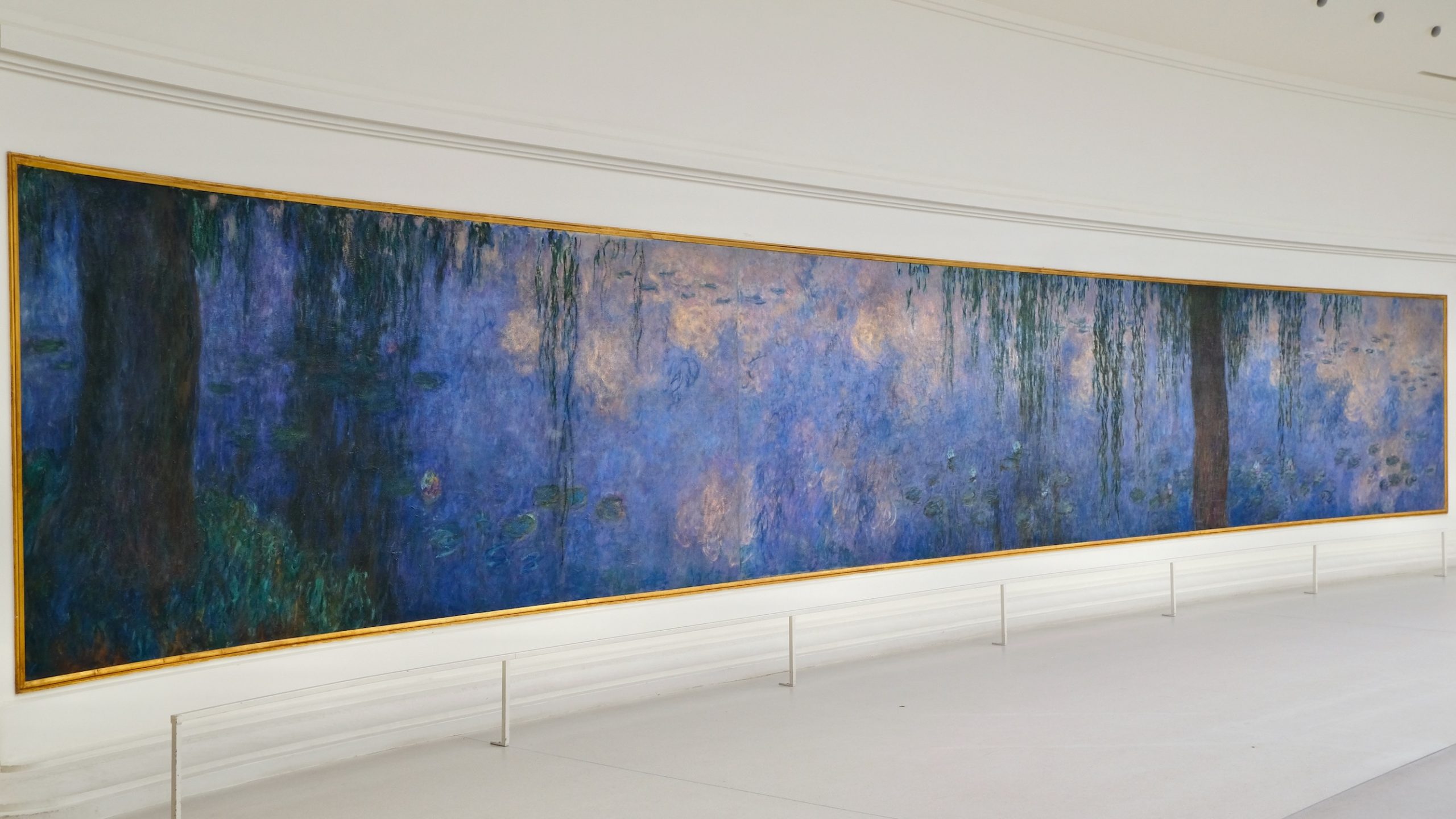Water Lilies
This monumental oil on canvas from Monet’s Nymphéas cycle measures 219 × 602 cm and is a highlight of Impressionism. Painted from his garden in Giverny, it captures a dreamlike expanse of water and lilies. One of eight panels permanently installed at the Orangerie des Tuileries in Paris, the work offers a tranquil, immersive experience that deeply influenced modern art.
Ratings / Reviews
Información adicional
| Dimensions | Original: 219 cm × 602 cm, Small: 87.6 cm × 240.8 cm, Medium: 131.4 cm × 361.2 cm, Large: 175.2 cm × 481.6 cm |
|---|
$1,120.00 – $6,796.00Price range: $1,120.00 through $6,796.00
Water Lilies (Nymphéas) is part of Claude Monet’s monumental Nymphéas cycle, a crowning achievement in both his career and the history of Impressionism. Measuring 219 × 602 cm, this oil on canvas is one of the eight massive panels permanently installed in two oval rooms at the Orangerie des Tuileries in Paris. The works together form a continuous, immersive panorama of water, sky, and lilies, drawn from the tranquil ponds of Monet’s beloved garden in Giverny.
Monet began working on his water landscape series in the late 1890s and would return to it obsessively for the next 30 years, right up until his death. As described by the Musée de l’Orangerie, the word nymphéa derives from the Greek numphé, meaning nymph, referencing the myth of a nymph who died of love for Hercules and became a water lily. This blend of myth, science, and nature resonated deeply with Monet, who saw the lily pond as a subject of endless variation and poetic potential.
The Nymphéas cycle represents a shift in Monet’s focus toward an abstracted, atmospheric approach, where form dissolves into color and light. His goal, as he described it, was to create “a circular room, whose walls are entirely filled by a horizon of water spotted with these plants. Walls of transparency—sometimes green, sometimes verging on mauve… the silence and calm of the water reflecting the flowering display; the tones are vague, deliciously nuanced, as delicate as a dream.”
Installed as he envisioned them, the paintings form what Monet called an “illusion of an endless whole, of a wave with no horizon and no shore.” The works offer a meditative space where time and perspective seem suspended. Their scale and immersive presence invite the viewer into a state of quiet reflection, mirroring the peace Monet found in his garden.
Though rooted in Impressionism, these works go beyond traditional landscape painting. The all-over composition and near-abstract brushwork would go on to influence generations of artists, especially the Abstract Expressionists of the New York School, who saw in Monet’s late work a precedent for their own large-scale explorations of color, emotion, and gesture.
The Water Lilies of the Orangerie remain not only one of Monet’s greatest legacies, but also one of the most significant achievements in 20th-century art. Carefully installed in natural light to enhance their immersive effect, they continue to captivate and inspire visitors from around the world.





